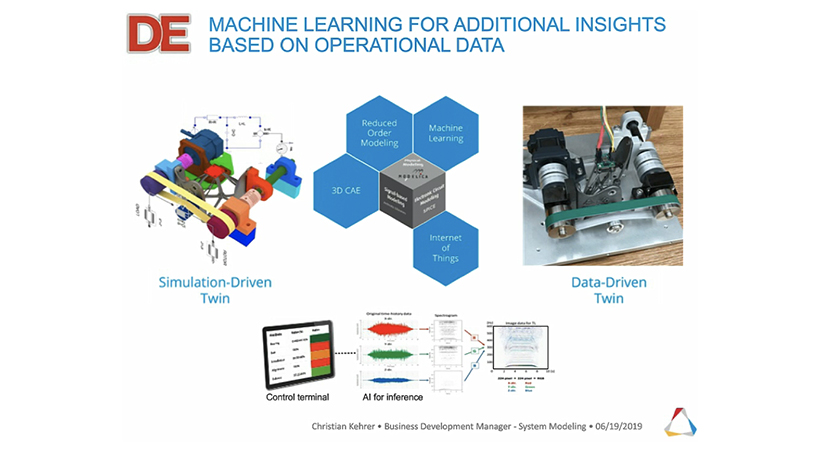Why All the Buzz About Digital Twins?
The use of digital twins is steadily going mainstream, and for good reason: they help organizations ensure their products and systems perform their best. As the name suggests, a digital twin is a digital representation of a physical object or system. It is typically connected to the physical asset with sensors, enabling two-way communication. The popularity of digital twins is on the rise because they provide organizations with a wide range of benefits.
Digital Twins Benefit Organizations in Many Ways
Digital twins span applications – from the shop floor to the top floor – enabling organizations to become more efficient, create innovative business models, and help generate new streams of revenue. Organizations can use digital twins to re-engineer products to meet regulatory requirements and avoid penalties. They allow organizations to improve asset management, boost the efficiency of complex systems, and ensure product reliability and safety. They are also deployed for predictive maintenance, preventing expensive breakdowns.
Regulatory Compliance
Digital twins enable organizations to design products and system components to ensure compliance with regulatory requirements. For example, designers and manufacturers in the automotive, marine, and aerospace industries must comply with the environmental regulations of governments around the world. With digital twins, engineers could redesign system components so that vehicle emissions such as NOx, CO2, and SOx are significantly reduced. Digital twins also can help companies in these industries comply with environmental regulations, avoiding regulatory costs and hefty fines.
Smart Asset Management
Digital twins allow smart utilities to better manage assets, improving the performance of the grid. A smart utility could use digital twins to leverage the real-time data generated from sensors connected to Distributed Energy Resources (DERs) such as solar panels and wind turbines. The utility could then use data intelligence and machine learning to analyze the data and gain important insights. Engineers could simulate scenarios related to energy consumption, such as weather events and peak usage times. Using insights gained from these scenarios and operational data, they could modernize the design of the grid, better incorporating DERs and microgrids. Digital twins could also be used to fix a wide range of challenges that come with DERs and the grid, preventing costly system breakdowns.
Product Development and Safety
The initial design of a new product is usually based on best-guess assumptions because there is no operational data. For example, the initial design of a new car battery would be based on the design and engineering of existing batteries. Without operational data, the new car battery cannot be designed as well as it could be. Once a prototype for the new battery is produced, a digital twin could be used to analyze the operational data. The digital twin would also be used to simulate scenarios related to battery use, such as driving conditions, temperature, and state of charge. Using machine learning, the data generated from these scenarios could be analyzed to predict situations where batteries may have problems. These scenarios would help engineers identify and fix issues so that the new battery would not overheat, overcharge, or explode.
Predictive Maintenance
An airline, for example, could implement a digital twin to make predictions about the health of each aircraft engine. The digital twin would be connected to each engine with sensors that measure attributes such as fuel-to-air ratio, fan speed, temperatures, and pressures. It would then leverage machine learning to analyze data generated from each engine to predict when an engine will need minor maintenance. The digital twin thereby helps the airline prevent catastrophic engine failures and reduces the need for major repairs or grounding aircraft.
Driving Innovation in Product Design and Engineering
For the companies using them, digital twins are driving significant innovation in product design and engineering. Digital twins include features and capabilities that allow engineers to have greater control in the design, engineering, operation, environment, and re-engineering of products and systems. They allow for continuous development, which is typically driven by both a physics-based digital simulation and insights gained from data generated throughout operation. Digital twins make it possible for organizations to collect and aggregate data from multiple disparate systems, including the operational data of physical assets. Digital twins enable organizations to run simulations, run stress tests, monitor systems, predict failures, and more without having to interrupt or stop operations.
Some digital twins allow organizations to take advantage of advanced technologies such as machine learning and neural networks to solve complex problems. For example, machine learning can be used to recognize patterns in usage data leading to the development of products with improved performance.
Screenshot of belt drive digital twin example explained below and in this digital twins webinar.
For example, we placed a sensor in the middle of a mechatronic system (a belt drive). The sensor collected data from five points of five different sources such as misalignment of the axis, wrong belt drive tension, and damping parameters of the foundation of the system. All these sources were overlaid onto an image that we used to train a neural network. The overlay signal can thus be decomposed through re-engineering to determine which influencing component is mainly responsible for unwanted vibration phenomena. While we measured with only one sensor, there were five different reasons for unwanted vibration. We used the trained neural net to analyze the graph of the oscillations to find out which of those five reasons had the most impact on the vibration of the system.
Does Your Organization Need a Digital Twin?
The answer to this question is a resounding, yes! Although every organization has unique requirements. A digital twin provides the building blocks needed to solve complex problems, ensuring that product design, development, and operation processes yield better results.





